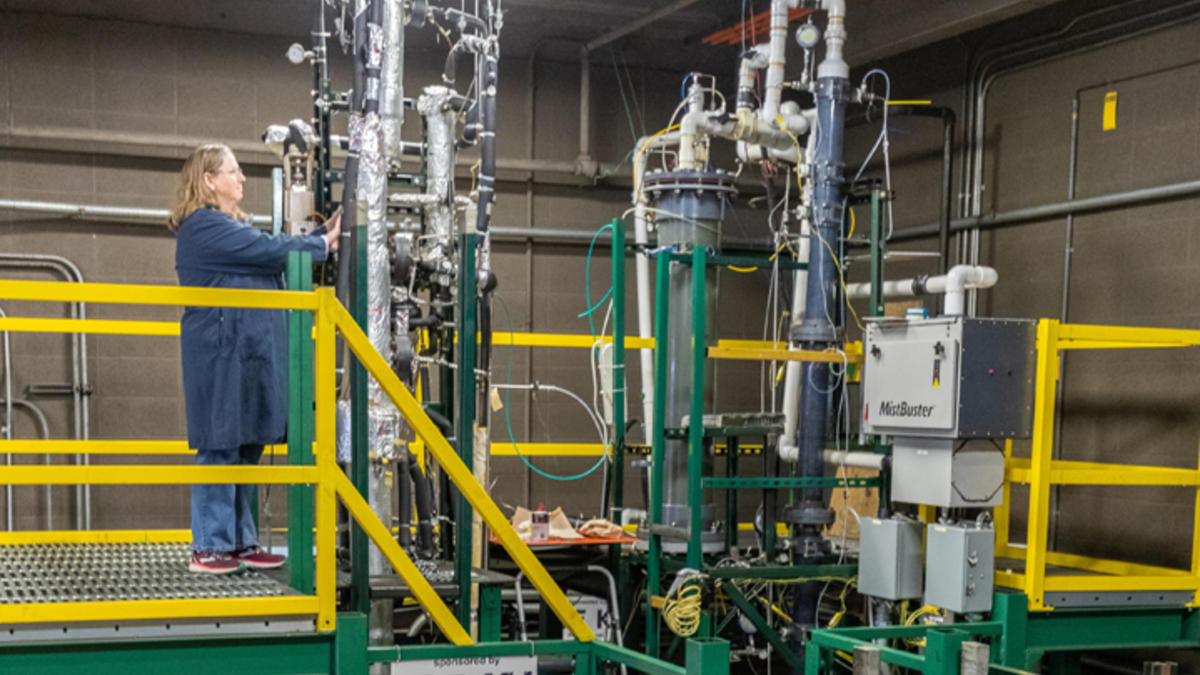The University of Kentucky has received $2.4 million in funding from the U.S. Department of Energy’s (DOE) National Energy Technology Laboratory (NETL) to develop a cost-effective system that will capture carbon dioxide (CO2) and produce hydrogen at natural gas combined cycle (NGCC) power plants.
Partnering with the Center for Applied Energy Research (CAER) on the project is the UK College of Engineering’s Department of Mechanical Engineering, Electric Power Research Institute (EPRI), ALL4 and Louisville Gas and Electric Company and Kentucky Utilities Company (LG&E and KU) — part of the PPL Corporation family of companies. The project (DE-FE0032134) is titled “Dual-loop Solution-based CO2 Capture System for Net Negative CO2 Emissions with Lower Costs.”
Building on a seed grant received from LG&E and KU in 2021, UK researchers will design, retrofit and research a dual solvent CO2 capture system on CAER’s existing 0.1 MWthermal bench-scale facility using natural gas-derived flue gas.
One of the unique technical challenges facing the research team, according to principal investigator Heather Nikolic, is capturing nearly all of the CO2 from a low-concentration point source, such as natural gas-derived flue gas.
“Natural gas combined cycle systems have a CO2 concentration of ~ 4 vol% as well as high oxygen concentrations,” said Nikolic, program manager at CAER. “Creating a system that can capture 99.8+% of the CO2 means that the flue gas being emitted from this system will have less CO2 than currently exists in the atmosphere, making it a negative emissions technology. Producing pure hydrogen while electrochemically regenerating a portion of the capture solvent helps offset the overall cost. We know this is all possible, and we are excited to learn more alongside our collaborative research team.”
“Capturing nearly all of the CO2 from a point source makes economic sense when compared to capturing CO2 directly from the air at ~400 ppm,” said Kunlei Liu, co-principal investigator on the project and associate professor in the Department of Mechanical Engineering at UK. “We look forward to reducing the overall cost of electricity production with negative CO2 emissions.”
As companies seek decarbonization initiatives, the successful development of this type of technology holds great promise. Being able to capture nearly all of the CO2 from NGCC systems while producing a valuable product (hydrogen) would provide utilities and industrial companies with solutions to meet their corporate goals.
“Partnering to support projects like this, that explore innovative ways to enhance sustainability and create efficiencies while still meeting consumers’ energy demands, is important for the future our utilities and our industry,” said LG&E and KU Chief Operating Officer Lonnie Bellar. “That’s why we’ve partnered with UK and CAER for more than 30 years and keep research and development a key focus area within our business.”
This material is based upon work supported by the Department of Energy, National Energy Technology Laboratory under Award Number DE-FE0032134.
